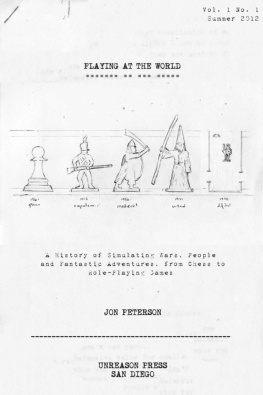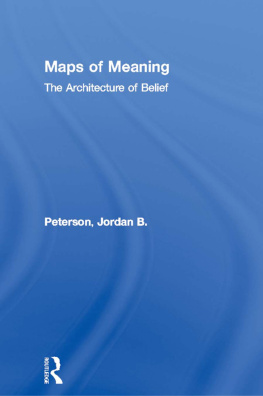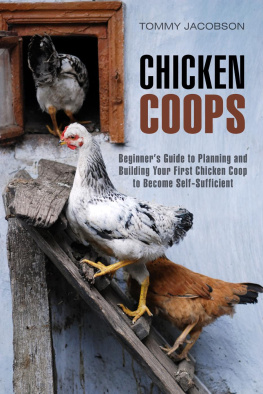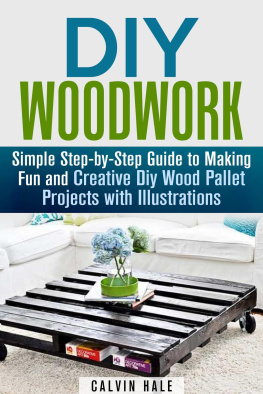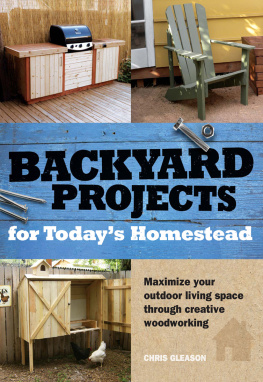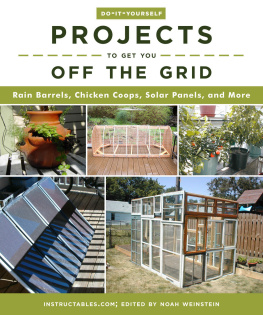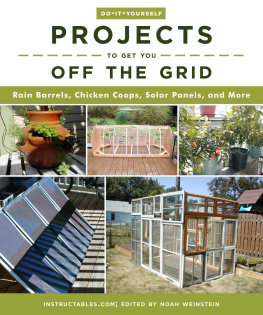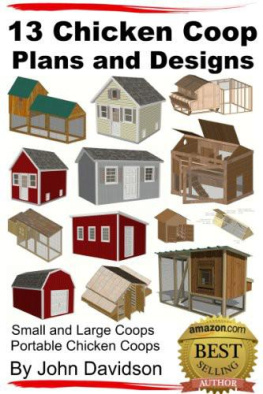PRACTICAL PROJECTS
for
SELF-SUFFICIENCY
DIY Projects to Get Your Self-Reliant Lifestyle Started
Chris Peterson and Philip Schmidt

First published in 2014 by Cool Springs Press, an imprint of Quarto Publishing Group USA Inc.,
400 First Avenue North, Suite 400, Minneapolis, MN 55401
2014 Cool Springs Press
All rights reserved. With the exception of quoting brief passages for the purposes of review, no part of this publication may be reproduced without prior written permission from the Publisher.
The information in this book is true and complete to the best of our knowledge. All recommendations are made without any guarantee on the part of the author or Publisher, who also disclaims any liability incurred in connection with the use of this data or specific details.
Cool Springs Press titles are also available at discounts in bulk quantity for industrial or sales-promotional use. For details write to Special Sales Manager at Quarto Publishing Group USA Inc., 400 First Avenue North, Suite 400, Minneapolis, MN 55401 USA. To find out more about our books, visit us online at www.coolspringspress.com.
Digital edition: 978-1-61058-983-3
Softcover edition: 978-1-59186-595-7
Library of Congress Cataloging-in-Publication Data
Peterson, Chris, 1961
Practical projects for self-sufficiency : DIY projects to get your self-reliant lifestyle started : eat, grow, preserve, improve / Chris Peterson.
pages cm
ISBN 978-1-59186-595-7 (softcover)
1. Sustainable living. 2. Home economics, Rural. 3. Small gardens. 4. Farms, Small. I. Title.
GE196.P48 2014
640--dc23
2013049104
Acquisitions Editor: Mark Johanson
Design Manager: Brad Springer
Layout: Brenda Canales
Front Cover Design: Rob Johnson
Author: Chris Peterson
Contributing Author: Philip Schmidt
Builder/Technical Editor: Eric Smith
Photographer: Tracy Walsh
Illustrator: Bill Kersey, Greg Maxson
Photo Assistance: Susan Storck, Christopher Fultz
Contents
DIY PROJECTS
Introduction:
Building a Self-Sufficient Life
Living a more independent lifestyle is a rewarding goal. By learning to do more things yourself you gain control of the how and when and what of modern life. The projects in this book are designed to help you reach the goal of self-sufficient living. The best part is that you dont need to sell your townhome and move to 80 acres in the mountains to make use of these projects. Pick off a few here and there and you can participate in the self-sufficient way of being without making the sacrifices required when living off the grid.
Why aspire to self-sufficiency? Because the pace of modern life can be overwhelming. All too often, the amazing technology that was supposed to free us and make life better and better instead becomes a drain on our money, time, and joy. As weve tried to improve our lives through progress and efficiency, we have ironically gotten further and further from many of the things that make life healthy, rewarding, and fulfilling. Its just a matter of cause and effect. Medical advances that allow for gene therapy are used to create GMO foods of unproven safety. An ever-ready energy supply has ensured that our lives are more comfortable and convenient than ever before; but our environment pays for that convenience in the fallout from fracking, the pollution of coal-fired power plants, and the occasional devastating oil spill. All the while, modern life seems to demand that we move faster, do more, make more, and consume more. Along the way, weve become less able to do for ourselves, and more in the habit of buying everything we need regardless of the environmental and personal consequences.
And make no mistake, there are consequences. As we continue to fill landfills at an alarming rate, see our water tables and well water increasingly become contaminated, and learn more about how corporate farming is creating a less diverse food-supply chain, the global and environmental benefits of whats come to be known as self-sufficient living become more relevant and more apparent. By saving water, raising food that doesnt involve long-distance transport (and all the fuel and pollution that transportation entails), and finding new ways to create what we need using only the energy in our bodies, were not only helping ourselves, were helping the world.
Those upsides are attracting growing numbers of people to the self-sufficient lifestyle. The fact that youre reading this book means that chances are, youre one of those people.
The homestead may look very different today than in the pioneer days. But what we may lack in acreage we can compensate for in creativity. Growing edibles in containers on a balcony is just one way to pursue your self-sufficient goals in an urban setting.
Slowly but surely, were learning that quantity, speed, and convenience are not always equal to quality, wholesomeness, and satisfaction. People across the country are realizing that highly processed food, produced and packaged on an industrial level, is often not as truly good tasting or as good for you as simpler food grown in your own backyard. People are reconnecting with animal husbandry, from raising two or three chickens to a small herd of goats. They are finding the pleasure in working with living things that create resources, such as food and fertilizer, and rediscovering the simple joy of hand-woven textiles made on a loom they built themselves. They are realizing that there is a way to live that is gentler on the eco-systems of which we are so much a part. On a more pragmatic level, they are saving money with what they grow and produce and what they no longer need to buy.
But more than that, they are choosing to live better, more rewarding lives. They are rediscovering the simple pleasure of creating something of worth with their own two hands, of reconnecting with the garden and finding a sense of craftsmanship and purpose in everyday life. These people are creating new traditions for their families and getting reacquainted with timeworn, valuable experiences and skills. This is all part of choosing a richer life.
).
Thankfully, this movement is not an all-or-nothing proposition. Self-sufficiency doesnt necessarily mean that you need to move completely off the grid and live without modern conveniences or technology. People still need to go to work, attend family events, commute, and spend some down time doing nothing (or whatever they enjoy doing). Other people dont have the skills or inclination to build, much less use, something like a loom. All thats okay. Maybe you dont want to raise chickens, but installing a solar energy source or adding a double-bin composter are more your speed. You can pick and choose; theres no evil in using the computer or watching a ball game on your big screen TV. Self-sufficiency isnt about living in a cave. Its about taking steps to do for yourself, to move back toward simpler, more fulfilling practices in daily life, and to help the environment one step at a time. Its about living healthy and creating a healthier world. In short, its about changing your life and the world around you in common-sense, achievable and positive ways.





